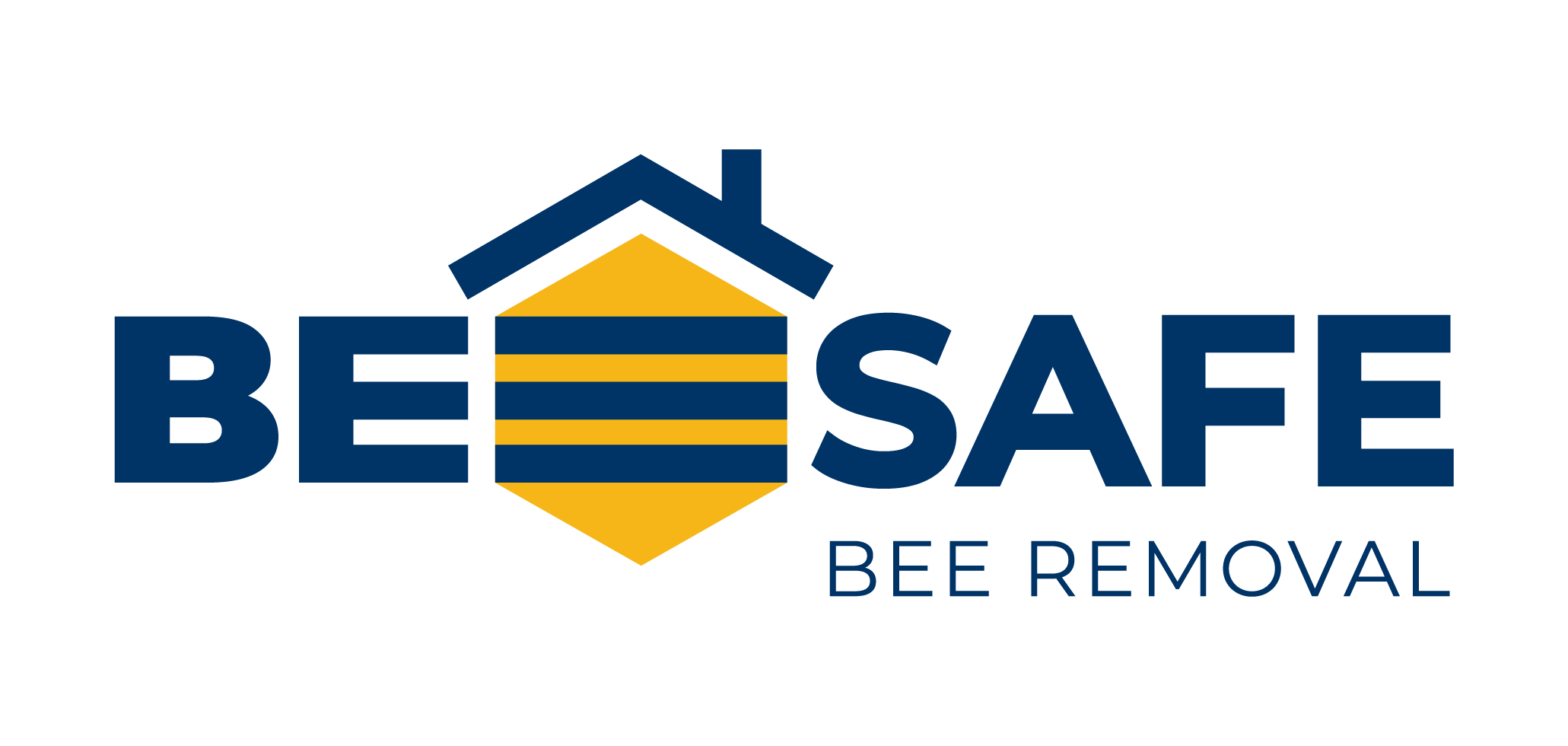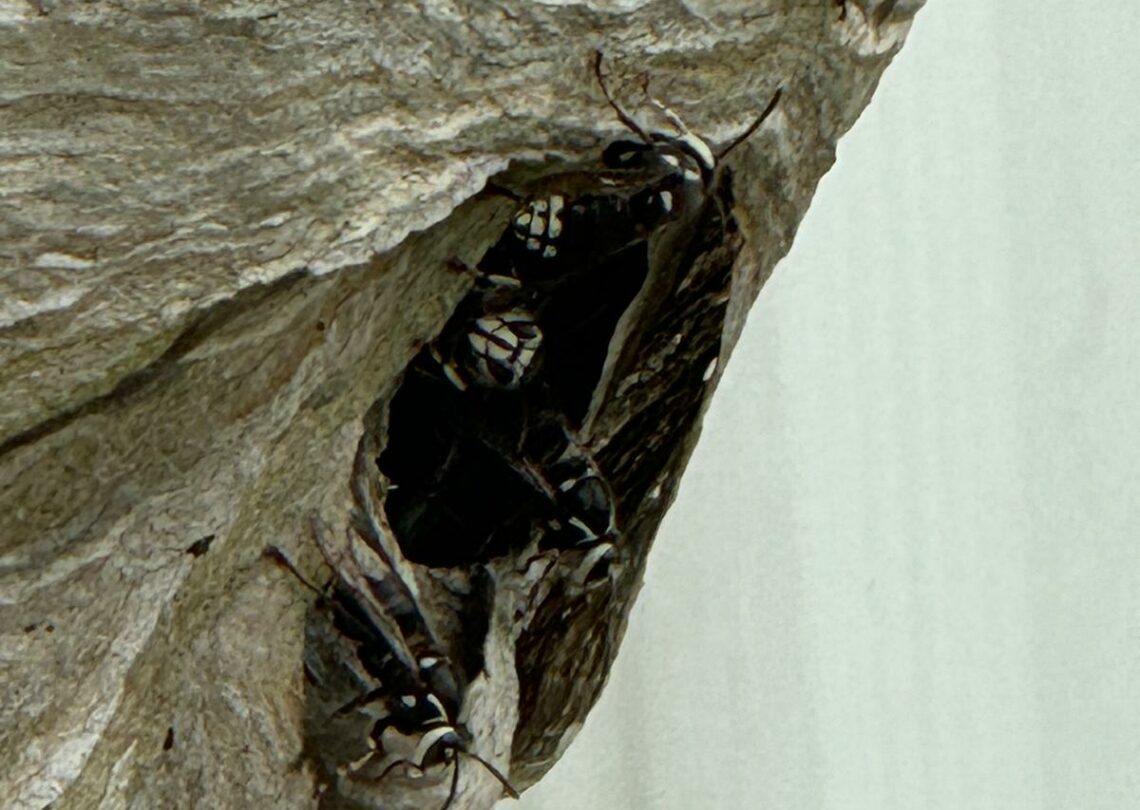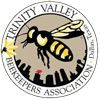Bald-faced hornets, scientifically known as Dolichovespula maculata, are a type of wasp known for their aggressive nature and painful stings. Despite their name, they are not true hornets but are closely related to yellowjackets. Recognizable by their black bodies with white facial markings, these hornets play a beneficial role in controlling pest populations. However, their defensive behavior around nests poses significant risks to humans, especially during late summer and early fall when their populations peak.
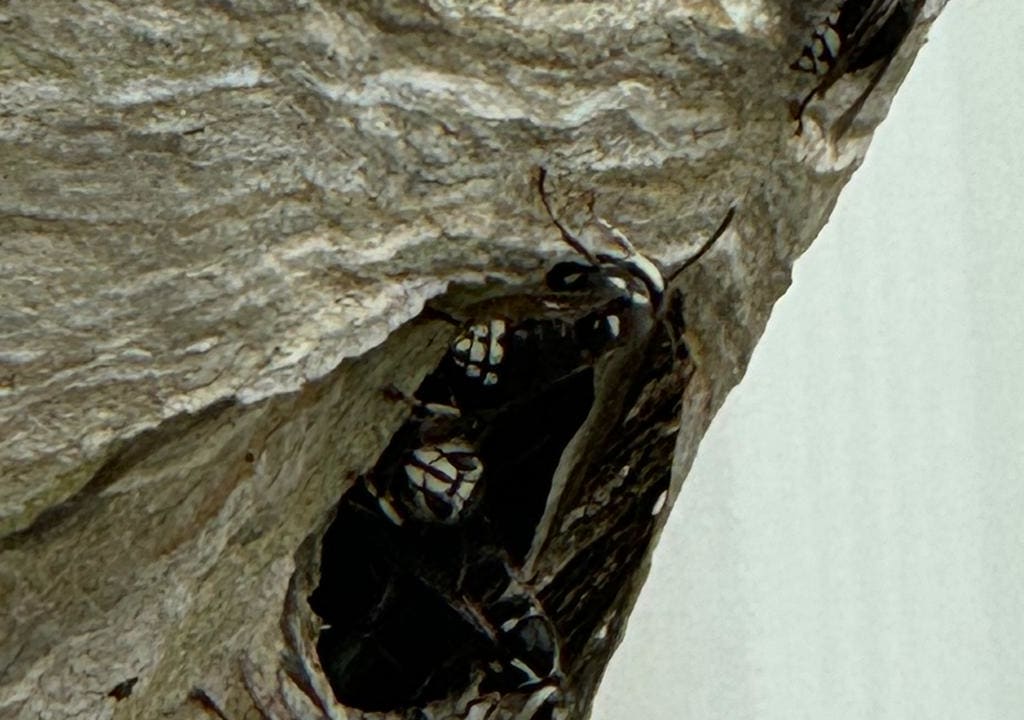
Dangers of Bald-Faced Hornets
Aggressive Behavior
Bald-faced hornets are known for their aggressive nature, especially when their nests are threatened. Unlike bees, which can only sting once, hornets can sting multiple times. This makes them particularly dangerous if they feel provoked. Their stings can cause intense pain, swelling, and, in some cases, severe allergic reactions.
Stinging Incidents and Allergic Reactions
There have been numerous reports of stinging incidents involving bald-faced hornets. For instance, in August 2019, a Massachusetts man died after being stung multiple times while mowing his lawn. His tragic death highlights the potential danger these insects pose, particularly to individuals with known allergies to wasp stings.
In another incident, a North Carolina woman experienced anaphylactic shock after accidentally disturbing a bald-faced hornet nest in her backyard. Quick administration of epinephrine was necessary to save her life . Such cases underline the importance of recognizing the symptoms of allergic reactions, which can include difficulty breathing, swelling of the face or throat, and dizziness.
Prevention and Safety Tips
To avoid dangerous encounters with bald-faced hornets, it is crucial to take preventative measures, especially during peak activity times. Here are some tips to keep in mind:
Identify and Avoid Nests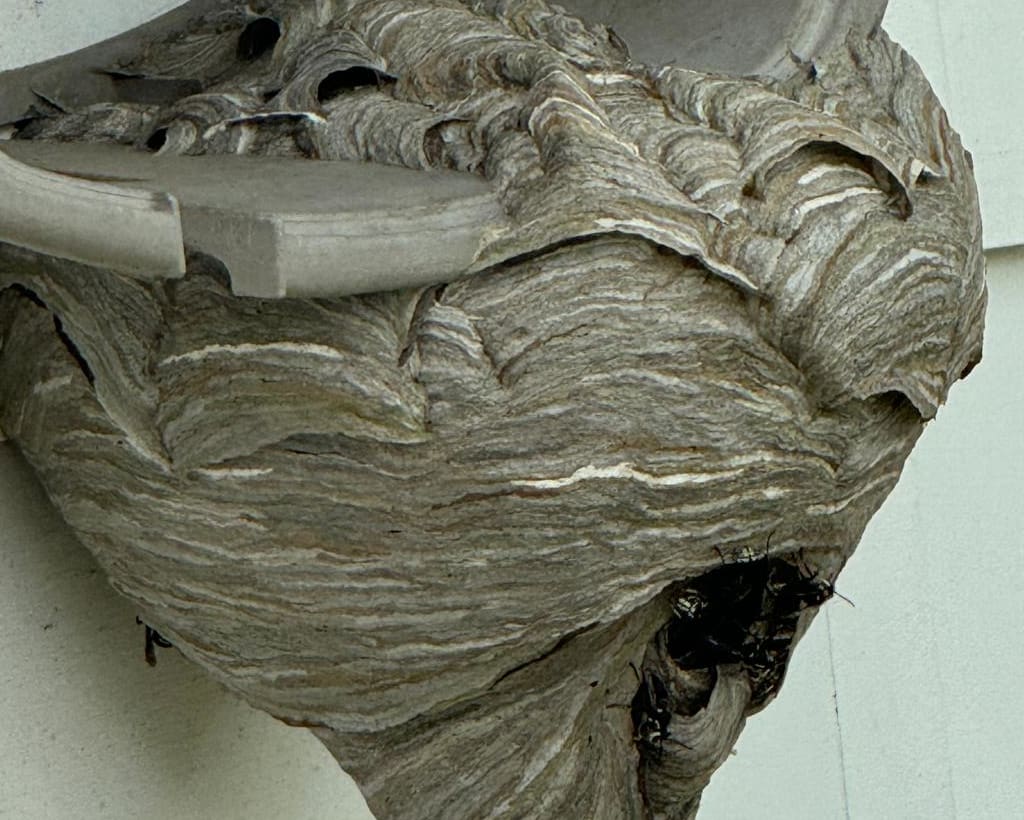
- Identify Nests: Bald-faced hornet nests are typically football-shaped and can be found hanging from trees, shrubs, or building eaves. They are constructed from a paper-like material made by the hornets chewing on wood fibers mixed with saliva.
- Avoid Disturbing Nests: If you locate a nest, maintain a safe distance and do not attempt to remove it yourself. Hornets can become aggressive if they feel their nest is threatened.
Personal Safety
- Wear Protective Clothing: When working outdoors, especially in areas where hornet nests are likely, wear long sleeves and pants to minimize exposed skin.
- Be Cautious with Food and Drinks: Bald-faced hornets are attracted to sweet foods and beverages. Keep these items covered when outdoors, and promptly clean up spills or food scraps.
Safe Removal of Nests
- Seek Professional Help: It is always best to hire professionals for nest removal. Bee Safe Bee Removal specializes in safely and effectively removing hornet nests without putting you or your family at risk.
- Do Not Attempt DIY Removal: Removing a hornet nest without proper equipment and expertise can be extremely dangerous. Professionals have the necessary gear and knowledge to handle hornet infestations safely.
Conclusion
Bald-faced hornets are an important part of the ecosystem, helping to control pest populations. However, their aggressive behavior and potential to cause harm make them a threat when they build nests near human habitats. Understanding their behavior and taking preventative measures can help reduce the risk of dangerous encounters. Remember, if you suspect a bald-faced hornet infestation, it’s always best to contact professionals like Bee Safe Bee Removal to handle the situation safely and effectively.
About Bee Safe Bee Removal
Bee Safe Bee Removal is a trusted name in pest control, specializing in the safe removal of hornets, bees, and other stinging insects. With years of experience and a commitment to safety, Bee Safe Bee Removal ensures your home and family are protected from the dangers posed by these insects. Visit their website for more information on their services and safety tips.
References: Massachusetts man dies after being swarmed by bees (boston.com)
